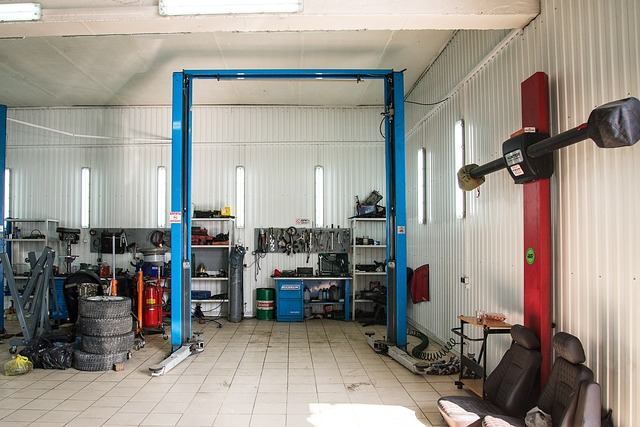Power over Ethernet (PoE) simplifies WiFi access point (WAP) deployment by transmitting data and power through standard Ethernet cables, reducing clutter and saving costs. Using PoE+ standards like IEEE 802.3at ensures high-power device compatibility and up to 1 Gbps data speeds. Best practices include Cat6/Cat6a cabling, proper termination, efficient routing, and regular firmware updates for optimal performance.
“Enhance your WiFi network infrastructure with Power over Ethernet (PoE) cabling—a game-changer for efficient WiFi access point (WAP) deployment. This article delves into the fundamentals of PoE, exploring its benefits in simplifying and optimizing your network setup. We’ll guide you through choosing the right PoE standard and offer best practices for seamless deployment and troubleshooting. Streamline your network cabling process and unlock the full potential of your WAPs with this essential read.”
Understanding Power over Ethernet (PoE)
Power over Ethernet (PoE) is a technology that enables the simultaneous transmission of data and power through standard Ethernet cables. This innovative approach simplifies the deployment process for network devices, particularly WiFi access points (WAPs). By integrating power delivery into the same cable as data transfer, PoE eliminates the need for separate power connections, streamlining installation and reducing cable clutter.
For network administrators managing a fleet of WAPs, PoE cabling offers significant advantages. It allows for efficient and cost-effective setup, ensuring that each access point receives both data and electricity from a single, standardized cable. This is especially beneficial in environments like schools, offices, or public spaces where multiple WAPs need to be installed and maintained with minimal fuss.
Benefits of PoE Cabling for WAPs
Power over Ethernet (PoE) cabling offers significant advantages for deploying WiFi access points (WAPs), revolutionizing network infrastructure. By combining data transmission and power delivery through a single cable, PoE simplifies installation processes and reduces cable clutter. This is particularly beneficial in spaces like schools, offices, or public venues, where multiple WAPs need to be installed efficiently.
Moreover, PoE cabling enhances device management and cost-effectiveness. With PoE, network administrators can remotely power on/off WAPs and monitor their status, simplifying maintenance. Additionally, PoE supports higher data speeds, ensuring robust connectivity for users. This efficient network cabling solution for WiFi access points is a game-changer in creating bustling, connected environments without the hassle of complex wiring.
Choosing the Right PoE Standard
When deploying WiFi access points (WAPs) via network cabling, selecting the appropriate Power over Ethernet (PoE) standard is paramount. PoE standards, defined by IEEE 802.3af and 802.3at, determine the power delivery and data transmission capabilities of your cables. For most modern applications, 802.3at (also known as PoE+) is the preferred choice due to its ability to support high-power devices like advanced WAPs. This standard ensures smooth operation by providing enough power while maintaining reliable data transfer speeds up to 1 Gbps.
Choosing the right PoE standard depends on your network’s requirements and future-proofing considerations. While 802.3af is suitable for lower-power devices, it may not meet the demands of newer, more powerful WAPs. By adhering to PoE+ standards, you future-proof your infrastructure, ensuring compatibility with evolving technology without the need for frequent cable replacements or upgrades.
Deployment Best Practices and Troubleshooting
Deployment Best Practices:
When deploying WiFi access points (WAPs) using Power over Ethernet (PoE) cabling, proper planning is key. Start by assessing your network layout and identifying the most efficient routing for the cables. Since PoE networking involves delivering power and data over a single cable, ensure that your cabling infrastructure can support this dual functionality without compromising performance. Use high-quality Cat6 or Cat6a cables to guarantee reliable data transmission and sufficient power delivery to the WAPs. Proper termination and labeling of cables are also crucial for easy management and troubleshooting.
Troubleshooting:
If you encounter issues with PoE WAP deployment, start with a basic check of connections – verify that all cables are securely plugged into both the access points and the network switches or power sourcing equipment (PSE). Ensure that the PSE is providing adequate power to each WAP according to their power requirements. Monitoring network performance using tools like bandwidth tests can help pinpoint any bottlenecks caused by inadequate cabling or power supply. Regular maintenance, including updating firmware for both WAPs and switches, is essential to keep your PoE network running smoothly and address potential compatibility issues.
Power over Ethernet (PoE) cabling is transforming the way we deploy WiFi access points, offering significant advantages in terms of efficiency and flexibility. By utilizing PoE, IT professionals can streamline network setup, reduce cable clutter, and simplify maintenance. With the right PoE standard selected and best practices followed, organizations can ensure reliable and cost-effective WAP deployment, enhancing network performance and user experience. This efficient network cabling solution is a game-changer for modern wireless networking.
